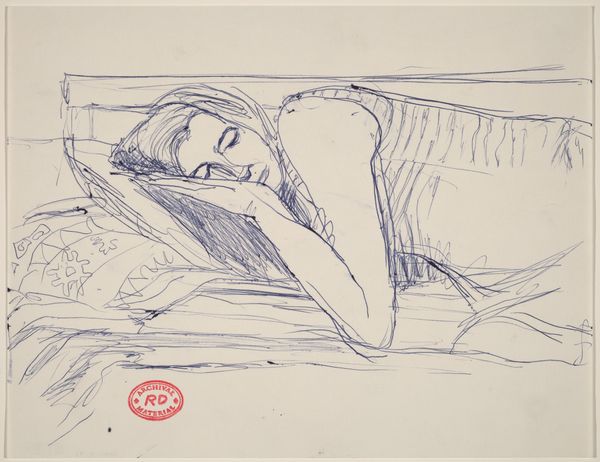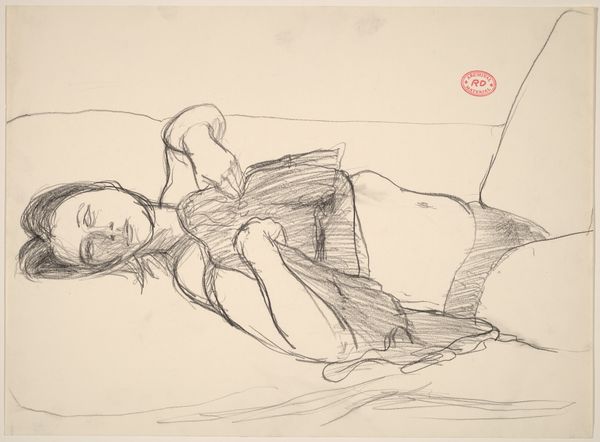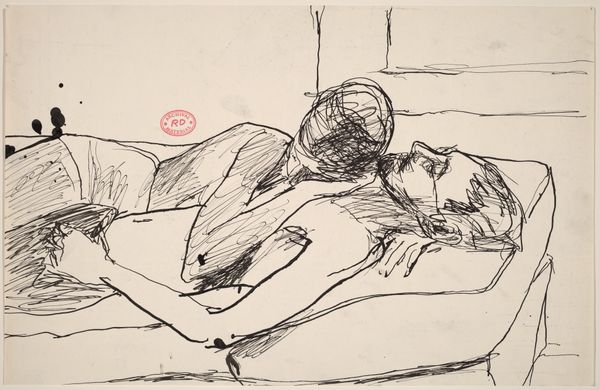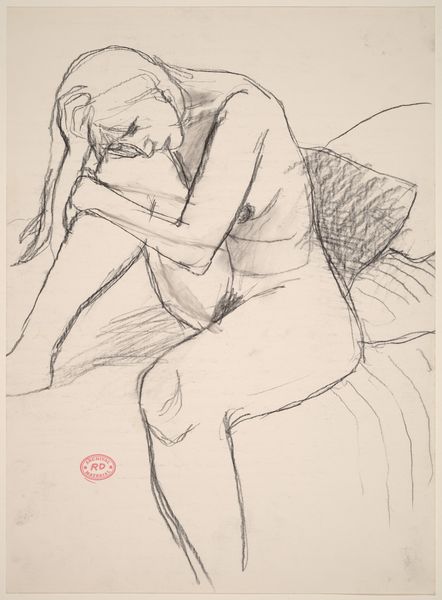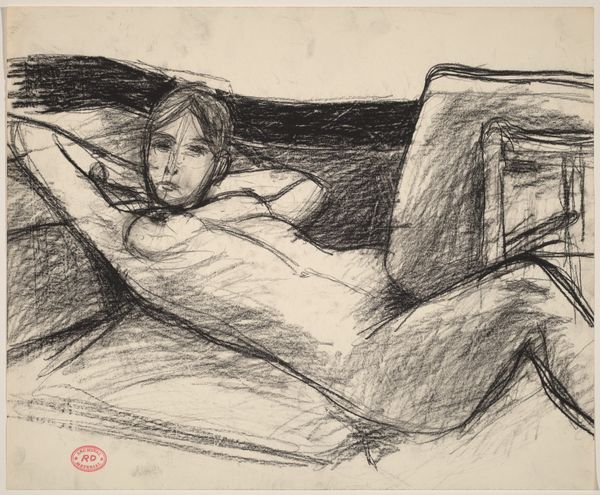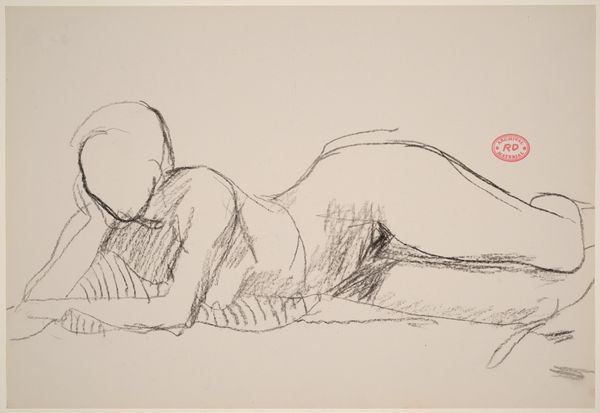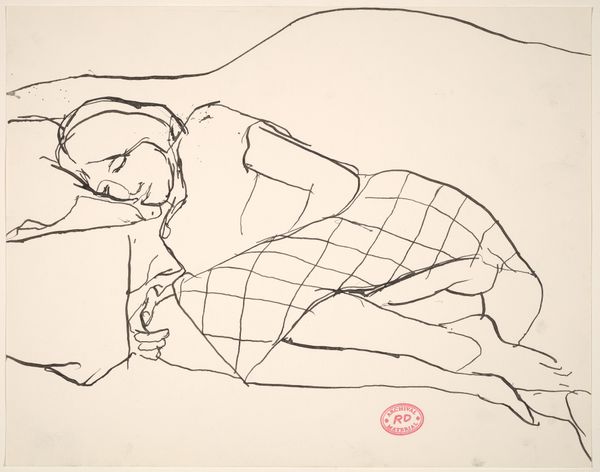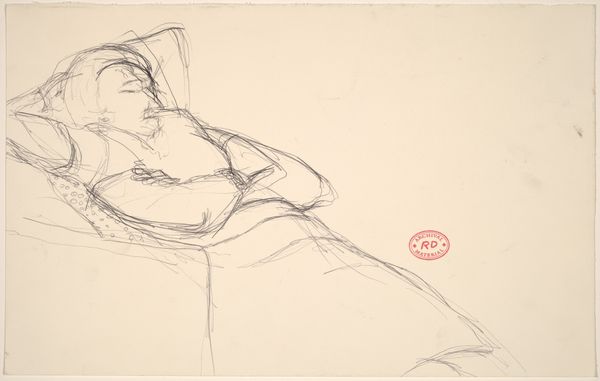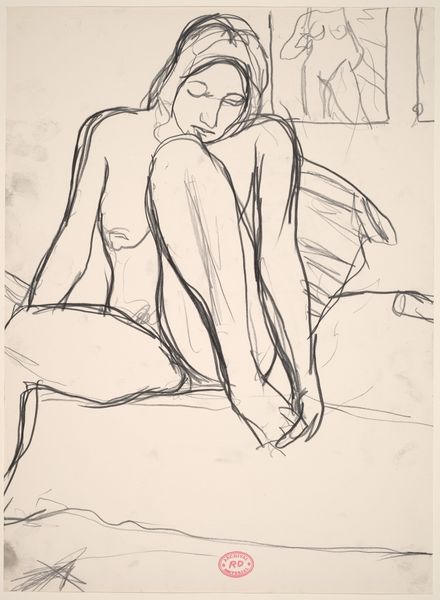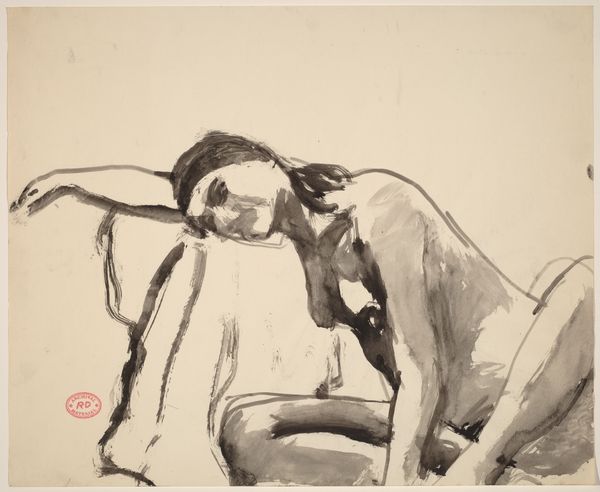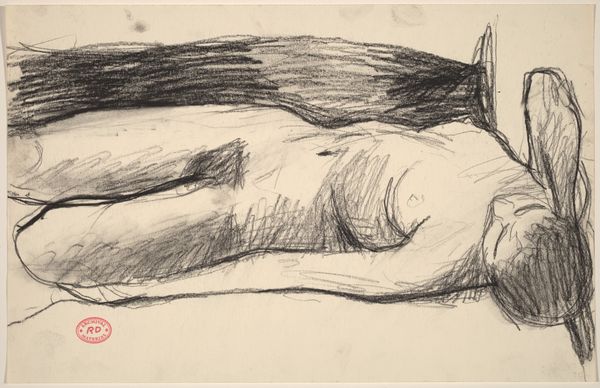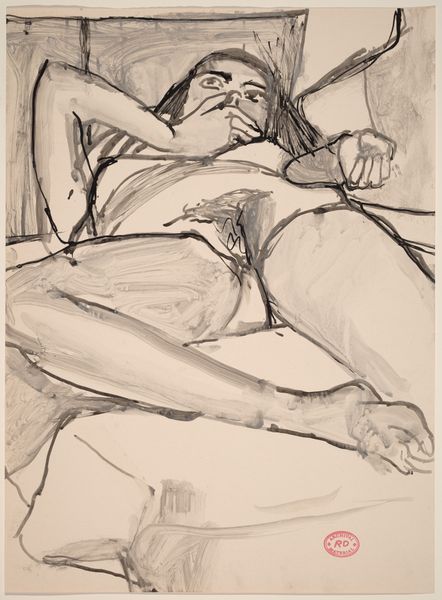![Untitled [sleeping woman] by Richard Diebenkorn](/_next/image?url=https%3A%2F%2Fd2w8kbdekdi1gv.cloudfront.net%2FeyJidWNrZXQiOiAiYXJ0ZXJhLWltYWdlcy1idWNrZXQiLCAia2V5IjogImFydHdvcmtzLzBhZjk2NzY3LTQ2ZjEtNDc5Yy05MjZiLWE2MGQ4NGRmOTc0MS8wYWY5Njc2Ny00NmYxLTQ3OWMtOTI2Yi1hNjBkODRkZjk3NDFfZnVsbC5qcGciLCAiZWRpdHMiOiB7InJlc2l6ZSI6IHsid2lkdGgiOiAxOTIwLCAiaGVpZ2h0IjogMTkyMCwgImZpdCI6ICJpbnNpZGUifX19&w=3840&q=75)
drawing, ink, pen
#
portrait
#
drawing
#
ink drawing
#
pen sketch
#
figuration
#
bay-area-figurative-movement
#
ink
#
sketchbook drawing
#
pen
Dimensions: overall: 21.7 x 28 cm (8 9/16 x 11 in.)
Copyright: National Gallery of Art: CC0 1.0
Curator: It's an image of unexpected vulnerability, wouldn't you say? So simple, almost severe in its lines... Editor: This pen and ink drawing, aptly titled "Untitled [sleeping woman]," comes to us from Richard Diebenkorn. Created sometime between 1955 and 1967, it showcases the artist's draftsmanship. The work rests on paper, an intimate moment rendered in blue ink. Curator: Blue is such a contemplative color, reinforcing that quiet mood. It evokes melancholy, the twilight zone between waking and dreaming. You can almost feel the weight of her slumber, a deep, almost unsettling stillness. Editor: Absolutely. Diebenkorn was known for moving between abstraction and figuration throughout his career. A piece like this, then, provides valuable insight. One wonders about his motivations in these portraits of women, common in his body of work, what narratives did he engage to define his portrayal? Curator: Portraits often speak to cultural ideals and inner realities, wouldn’t you agree? This particular image strikes me as exceptionally unidealized, lacking that carefully constructed image women were subjected to back then. Editor: Yes, the post-war social constraints placed on women absolutely serve as context for these artistic expressions. It is impossible not to think of other artists in the 50's-60's dealing with issues of body, repression and what could loosely be called mental states. This piece fits perfectly. Do you think, knowing this, that the drawing presents a sense of defiance, maybe even a hidden statement? Curator: It could very well be, and the "defiance" may emerge not as active rebellion but quiet withdrawal... Her closed eyes almost seem to refuse the world. In this period the figure embodies the psyche that is both stressed and resilient. Editor: Such a sketch reveals so much! By looking at the lines you could discern a sense of privacy; however the fact that it became a formal artwork speaks of Diebenkorn intention to share what should remain private. A duality indeed. Curator: Precisely, like he captured an inner world made visible, thus bridging what is private and shared space, cultural memory and timeless humanity. Editor: In our review of "Untitled [sleeping woman]" we found an interesting look into the complexity of form and representation. This piece acts as more than just ink and paper, but a representation of what should remain behind closed doors in everyday's life. Curator: A humble reminder of shared solitude.
Comments
No comments
Be the first to comment and join the conversation on the ultimate creative platform.
